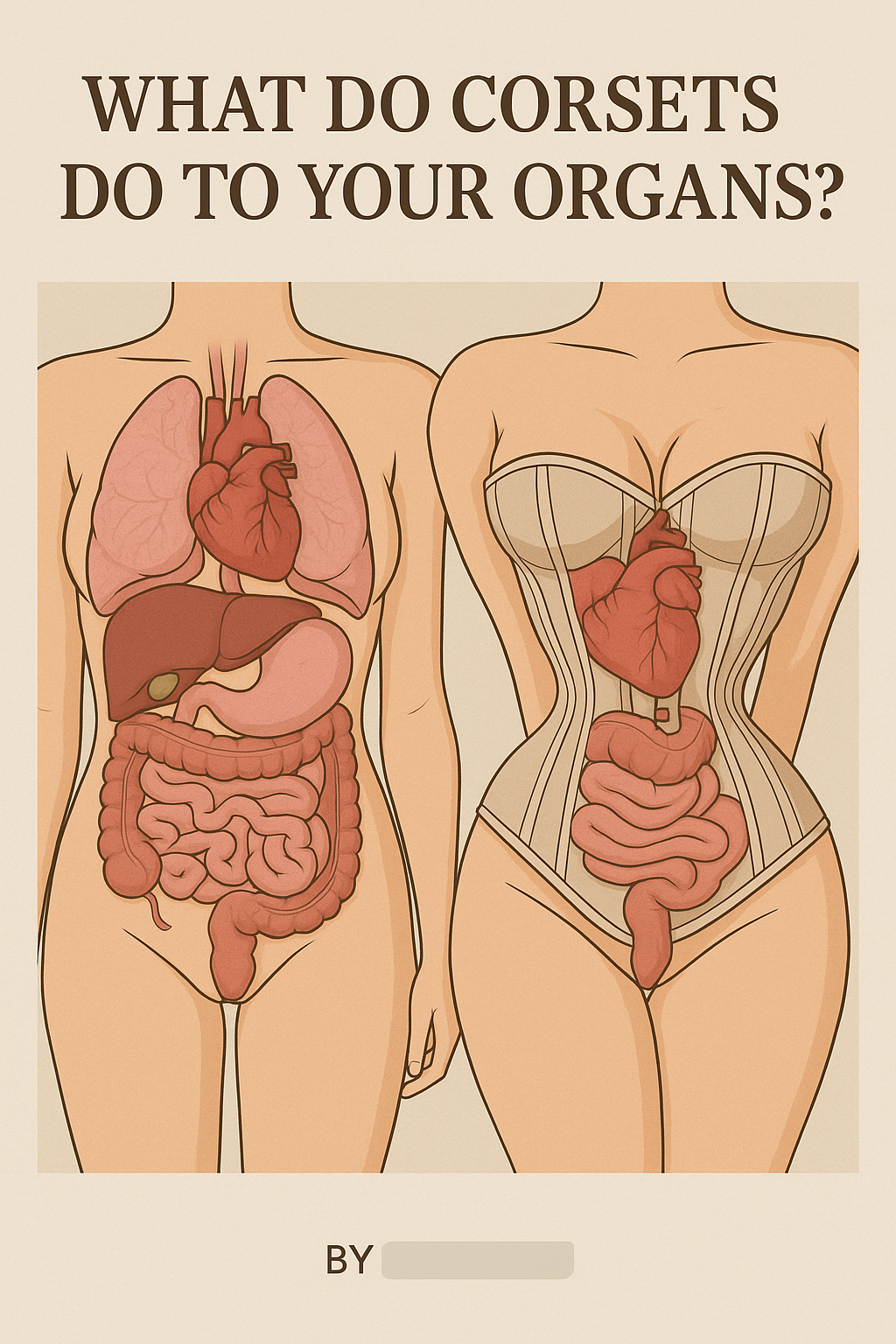
What Do Corsets Do to Your Organs?
Share
Corsets have long been admired for their ability to sculpt silhouettes and enhance posture. But beneath the elegance lies a pressing question: how do corsets affect your internal organs? In this guide, we break down the facts, clear up myths, and help you understand the impact of corsets on your body—especially when worn long-term or for waist training.
⏱️ In a Hurry? Here’s What You Need to Know:
- Corsets compress the torso, displacing internal organs.
- Extended tightlacing can cause digestive and respiratory issues.
- Occasional wear with a proper fit is generally safe.
- Waist training and fashion corsets have different effects.
How Do Corsets Affect Your Organs?
When tightly laced, a corset reshapes the waistline by redistributing flesh and compressing the midsection. This pressure causes organs such as the intestines, stomach, liver, and diaphragm to shift. While these organs are somewhat flexible and can adapt temporarily, continuous tightlacing or improper sizing can have side effects over time.
What Happens Internally When You Wear a Corset?
Here’s what typically occurs inside the body when a corset is worn:
- Diaphragm: Restricted movement can affect deep breathing and reduce lung capacity.
- Stomach & Intestines: Compression can lead to acid reflux, constipation, or slowed digestion.
- Ribs: Long-term use may shift the floating ribs inward.
- Liver: Can be pushed downward or slightly deformed with extreme compression, though this is rare and typically reversible.
Short-Term vs. Long-Term Effects
| Duration | Possible Effects |
|---|---|
| Short-Term (Few Hours) |
|
| Long-Term (Daily Waist Training) |
|
Are Corsets Dangerous?
Wearing a corset occasionally and responsibly is typically safe. However, prolonged tightlacing, especially without guidance or with an ill-fitting corset, can pose health risks. Like high heels or contact lenses, corsets alter your body—so they should be worn mindfully.
Tips for Safe Corset Use
- Start slowly and don't overtighten.
- Make sure your corset is custom-fit or adjustable.
- Listen to your body—if you feel pain or shortness of breath, loosen the laces.
- Alternate days and avoid daily use for extended periods.
- Practice core-strengthening exercises to counter muscle weakening.
Final Thoughts
Corsets can be empowering, stylish, and even beneficial for posture and back support when worn responsibly. But understanding what’s happening inside your body is key. If you plan to waist train or wear corsets regularly, take time to educate yourself and prioritize your health.
Remember: beauty should never come at the cost of well-being. Wear your corset wisely—and confidently.


